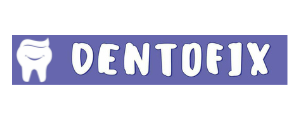Orthodontic Braces
Orthodontics is a tributary of dentistry that treats malocclusion, a condition in which the teeth aren’t rightly fixed when the mouth is closed. This results in an inappropriate bite. An orthodontist can carry out work that aims to achieve the following
- Ending wide gaps between the teeth
- Aligning the tips of the teeth
- Uncurling twisted teeth
- Perfecting speech or biting capability
- Uplifting the long- term health of gums and teeth
- Helps to prevent long- term extreme wear or trauma of the teeth
- Treating an inappropriate bite
- Treatment can enhance the look of the teeth, but it can also lead to better chewing and speech function and help cover teeth from any kind of damage or decay, in some cases.

To achieve these aims, the orthodontist uses a range of medical dental tools, including headpiece, plates, and braces.
Who should see an orthodontist? – Still, malocclusion can influence, If the jaws and teeth don’t develop duly. The teeth will be crooked and misaligned, and the bottom and upper sets of teeth may not line up.
Malocclusion isn’t a disorder and it doesn’t affect physical health. It’s a variation in the position of teeth. Still, it may affect the shape of the face and the appearance of the teeth, affecting embarrassment, a lack of self- esteem, and indeed depression.
Reasons include damage to the teeth or facial bones and habitual thumb or finger sucking, among others.
Orthodontic treatment can help treat or enhance the following : –
- Protruding frontal teeth Treatment can refine the appearance and protects the teeth from injury during sports afflictions or falls.
- Crowding- In a slim jaw, there may not be enough space for all the teeth. The orthodontist may take off one or further teeth to make space for the others.
- Impacted teeth- This can be when an adult tooth doesn’t come up from the gum or bone, or only emerges partly.
- Asymmetrical teeth- The upper and lower teeth don’t match, particularly when the mouth is not open but the teeth are showing.
- Deep bite, or overbite- When the teeth are gripped, the upper teeth come down too far over the lower ones.
- Reverse bite- When the teeth are gripped, the upper teeth stick inside the lower ones.
- Open bite- When the teeth are gripped, there’s a space between the upper and lower teeth.
- Underbite- The upper teeth are excessively far back, or the lower teeth are excessively far forward.
- Crossbite- At least one of the upper teeth doesn’t come down hard in the forepart of the lower teeth when the teeth are gripped. They’re too near the cheek or the tongue.
- Distance- There are gaps or room between the teeth, either because a tooth is not present, or the teeth don’t fill-up the mouth. This is the opposite of crowding.
DEVICES – Some of the examples of fixed orthodontic appliances include
Braces – These correspond to brackets, wires, and bands. Bands are fixed forcefully around the teeth and serve as anchors for the appliance, while brackets are generally connected to the forepart of the teeth.
Wires in the shape of an bow pass through the brackets and are positioned to the bands. As the bow line is stretched, pressure is applied to the teeth. Over time, this moves them into the correct position.
Follow-up involves repeated visits to shape or stretch the braces. Treatment may last from several months to a number of times.
Both clear and multicolored braces are available.
Fixed- space maintainers
However, a space maintainer will cut off the two teeth at either side of the spaces from moving into it until the adult tooth comes through, If a youngster loses a baby tooth. A band is positioned to one of the teeth next to the space, and a wire goes from the band to the dissimilar tooth.
- Removable space maintainers
- These are an option to fixed- space maintainers.
- Special fixed appliances
- These can help regulate tongue thrusting or thumb sucking. They may be discomforting, particularly when eating, and so they’re only used if necessary.
- Removable orthodontic Braces
- These may be used to treat minor problems, similar as helping thumb sucking or correcting slightly twisted teeth.
- The braces should only be taken out when cleaning, eating, or flossing. Occasionally, the orthodontist may guide the patient to remove them during certain exercises, such as playing a wind instrument or cycling.
Examples of removable braces include
- Aligners- This awesome alternative to braces may be useful for grown-ups. They’re nearly invisible to other people, and they can be removed to wash the teeth, floss, or eat. An aligner is used for 2 to 3 weeks, furthermore changed for a tighter one.
- Headpiece- A strip around the back of the head is attached to a metal wire in the front, or face bend. The purpose is to decelerate down upper jaw growth, and keep the back teeth in position while the frontal ones are pulled back.
- Lip and cheek fenders- These are especially made to relieve the pressure of cheeks or lips on the teeth.
- Palatal expander- This appliance is aimed to make the angle of the upper jaw wider. It consists of a plastic plate with screws that’s placed on the palate, or canopy of the mouth. The screws put pressure on the joints in the bones, pressuring them outward. This expands the size of the area in the roof of the mouth.
- Retainers- These are applied after treatment to stop the teeth from relocating back to their original positions.However, they may also be used to stop kids from sucking their thumbs, If modified.
